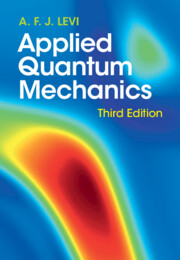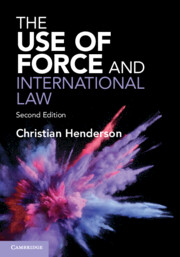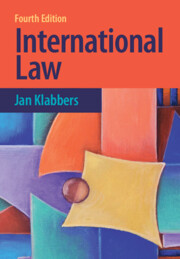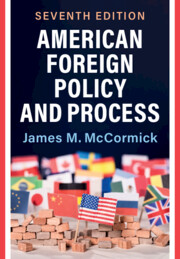Refine search
Actions for selected content:
36846 results in Cambridge Textbooks
Brief Contents
-
- Book:
- American Foreign Policy and Process
- Published online:
- 19 October 2023
- Print publication:
- 02 November 2023, pp vii-viii
-
- Chapter
- Export citation
Documents and Document Summaries
-
- Book:
- American Foreign Policy and Process
- Published online:
- 19 October 2023
- Print publication:
- 02 November 2023, pp xvii-xviii
-
- Chapter
- Export citation
18 - By Way of Conclusion
- from Part III - The Surroundings of International Law
-
- Book:
- International Law
- Published online:
- 19 October 2023
- Print publication:
- 02 November 2023, pp 347-350
-
- Chapter
- Export citation
15 - The Global Economy
- from Part II - The Substance of International Law
-
- Book:
- International Law
- Published online:
- 19 October 2023
- Print publication:
- 02 November 2023, pp 294-314
-
- Chapter
- Export citation
12 - Electrodynamics and Relativity
-
- Book:
- Introduction to Electrodynamics
- Published online:
- 06 October 2023
- Print publication:
- 02 November 2023, pp 508-577
-
- Chapter
- Export citation
11 - The Military and Intelligence Bureaucracies
- from Part II - The Process of Policy Making
-
- Book:
- American Foreign Policy and Process
- Published online:
- 19 October 2023
- Print publication:
- 02 November 2023, pp 479-537
-
- Chapter
- Export citation

Applied Quantum Mechanics
-
- Published online:
- 27 October 2023
- Print publication:
- 31 August 2023
-
- Textbook
- Export citation

A Primer in Christian Ethics
- Christ and the Struggle to Live Well
-
- Published online:
- 26 October 2023
- Print publication:
- 09 November 2023
-
- Textbook
- Export citation

The Use of Force and International Law
-
- Published online:
- 26 October 2023
- Print publication:
- 09 November 2023
-
- Textbook
- Export citation

International Law
-
- Published online:
- 19 October 2023
- Print publication:
- 02 November 2023
-
- Textbook
- Export citation

American Foreign Policy and Process
-
- Published online:
- 19 October 2023
- Print publication:
- 02 November 2023
-
- Textbook
- Export citation
Chapter 2 - Historical Perspectives
- from Part I - Fundamentals
-
- Book:
- Cognitive Neuroscience
- Published online:
- 15 September 2023
- Print publication:
- 19 October 2023, pp 38-62
-
- Chapter
- Export citation
Frontmatter
-
- Book:
- Intermediate Macroeconomics with Chinese Perspectives
- Published online:
- 10 November 2023
- Print publication:
- 19 October 2023, pp i-iv
-
- Chapter
- Export citation
Tables
-
- Book:
- Intermediate Macroeconomics with Chinese Perspectives
- Published online:
- 10 November 2023
- Print publication:
- 19 October 2023, pp xv-xvi
-
- Chapter
- Export citation
Acknowledgments
-
- Book:
- Cognitive Neuroscience
- Published online:
- 15 September 2023
- Print publication:
- 19 October 2023, pp xix-xix
-
- Chapter
- Export citation
Copyright page
-
- Book:
- Principles of Turbomachinery in Air-Breathing Engines
- Published online:
- 18 November 2023
- Print publication:
- 19 October 2023, pp vi-vi
-
- Chapter
- Export citation
Chapter 4 - Motor Control
- from Part II - Neural Bases of Mental Functions
-
- Book:
- Cognitive Neuroscience
- Published online:
- 15 September 2023
- Print publication:
- 19 October 2023, pp 94-127
-
- Chapter
- Export citation
1 - Introduction
-
- Book:
- Intermediate Macroeconomics with Chinese Perspectives
- Published online:
- 10 November 2023
- Print publication:
- 19 October 2023, pp 1-12
-
- Chapter
- Export citation
1 - Introduction to Gas Turbine Engines
-
- Book:
- Principles of Turbomachinery in Air-Breathing Engines
- Published online:
- 18 November 2023
- Print publication:
- 19 October 2023, pp 1-7
-
- Chapter
- Export citation
7 - Polytropic (Small-Stage) Efficiency
-
- Book:
- Principles of Turbomachinery in Air-Breathing Engines
- Published online:
- 18 November 2023
- Print publication:
- 19 October 2023, pp 298-313
-
- Chapter
- Export citation
